The Weekly Mash, Friday 18th July
Hello campers! This week we go into the world of decay to look at hogo, funk and rancio …
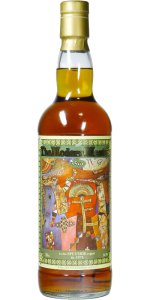
A Load of Rot
It leaps out at you, this weird mix of old cheese, horse blanket, lambic beer, ancient soy sauce, dried meat, dank wine cellar: yak, biltong. It has a feral touch. Something untamed, something… wrong. It is at the extreme edge of whisky rancio, We’re in Tokyo’s Aloha Bar, a must-visit repository of great Japanese (and other) whiskies in order to taste the ten-strong ‘Modern Masters’ range of single malts, bottled by Whisk-E a decade or more ago.
They date from the ‘60s (a Glen Grant 1967) to the ‘80s (Brora 1981, Highland Park 1982) with the bulk in the ‘70s including this. Though bottled as ‘Speyside’, we know it’s a Glenfarclas from 1971.
It has put an abrupt halt to the gentle, almost stately building of character in the rest of the range, which has taken us through a world of tropical fruits, ethereal blossoms, the scents of shoreline and beehives. All of that refinement, shattered.
We all laugh and look at each other, wondering who will be the first to break the silence, because whisky isn’t meant to be like this, is it? The unsaid question hovers. Is this … bad?
It’s a rough guest shambling into the party late, mud-spattered, foul-mouthed, stinking of rot, then and slamming a dead beast onto the table. An aroma that is wilder, darker, almost offensive. One in which rancio’s derivation from rancid becomes alarmingly clear. It is the smell of things gone too far, of being pushed not just to the edge, but beyond it. It is evidence of the rot which lurks within everything … the decomposition, the falling away, the truth of impermanence, a final descent into some fetid pit.

‘Odours and flavours can be classified as either pleasant or unpleasant and enjoyed or avoided respectively. Two emotions that therefore would appear to be of relevance… are fear… and disgust.’ (*)
There are many scientific papers which detail the human aversion to the aromas that trigger disgust. That it is a logical evolutionary development – at this and you will be ill, or die, an atavistic response, showing that our sense of smell at its basest level is an early warning system. ‘There is something wrong,’ it tells us. ‘Go no further’. And yet … we all return to the glass. Why? Because decay fascinates us. Its scents are compelling.
This Glenfarclas draws us back in the same way as durian fruit, old mutton, well-hung pheasant or venison, guga (gannet), stinky tofu, washed rind cheese. Some might add hákarl (Iceland’s fermented shark) which reeks of ammonia, but you can go too far …
The warning signals which tell us to steer clear of this food: the ‘high’ smell, the presence of mould is hardwired in our systems, yet we don’t simply eat all of these things (maybe apart from hákarl which as far as I can tell is only ever served to tourists), we seek them out and savour them.
Why offal, or andouillette? Why the lure to the fæcal reek? Is it driven by the same emotion which gives us a thrill – the fear of the Sublime, roller coasters, climbing, the desire to be on the edge. This smell of decay and death is an assertion that we are alive.
Carolyn Korsmeyer has written, among other things ‘Savouring Disgust’, and ‘Making Sense of Taste’. In the former, she points out that the disgusting [blue cheese, ‘high’ meat etc] can be a gateway to a fascinating array of flavours.
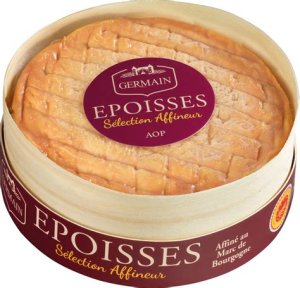
She argues that when you know what you’re tasting, positive qualities emerge in something which otherwise would be thought of as disgusting. The concept might be unpleasant, but the reality is a heightened sensory experience in which your inbuilt prejudices can be overridden.
‘Look at beer,’ writes Chandler Burr, quoting perfumer and author Luca Turin (**). ‘It smells like a burp. Gases from someone’s stomach. Lovely… a product of fermentation, which is to say decay.
‘Decay enhances smells and flavours, yet we have a sharp ability to ID decay, because decaying things will kill you… Which can give you “I wouldn’t touch that in a million years,” and at the same time, ”I will pay great sums to consume Rodenbach.’
The aroma that is hovering above this whisky (and the tropical-accented ones) is an example of whisky rancio, an aroma produced by a complex chemistry: the interplay of methylketones, the breakdown of long-chain fatty acids, the oxidation of lignins and lactones in the wood, a building of esters. All by-products of microbes making rot happen.
Its precursors could be set in motion by long fermentation times. There’s a theory that the ‘browning effect’ (a Maillard reaction) provided by direct fired stills can also be a contributory factor.
It appears in already fruity whiskies which have had a relaxed maturation in refill casks for two decades or more. Dunnage warehouses, adding fungal elements, can play their part. Over time, ethanol goes, along with the most volatile aromatic elements. What’s left is oxidised, concentrated. It is the smell of what lies beneath. Rancio is there in Cognac – and the ways of encouraging it are known [inclusion of yeast in the distillation, damp warehouse, old casks, time].
Rancio is there in the tropical fruits of the great Bowmores, and also the waxes of Convalmore and in the meaty oiliness of old Springbank and Ben Nevis. This Glenfarclas was pushing it further.
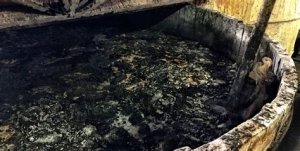
Something similar is found in the funkiness of some Jamaican rums. Known as ‘hogo’ (from the French haut-goût, ‘high-smell’) it helped define the island’s style. As the rest of the Caribbean’s distillers searched for ways to rid their rums of the scent, Jamaica celebrated it as a part of its identity.
Its creation differs from rancio by being the result of a specific fermentation technique. It involves dunder (the spent wash from distillation) being added to the molasses in the fermenters along with an amount of ‘flavour’ from muck pits.
These are tanks filled with a ferment of dunder solids, the residue from retorts, cane trash, dead yeast and crushed marl (clay and calcium carbonate). It’s high in butyric and fatty acids and its addition to the ferment slows it and super-charges esters. In some cases, cane vinegar is also added.
On its own, butyric acid smells of baby sick, or cheap parmesan cheese. You don’t want it in its pure state in whisky. However, if butyric acid is combined with alcohol it produces ethyl butyrate, out comes the scent of pineapple. Something that in excess would be a fault, is turned into an asset.
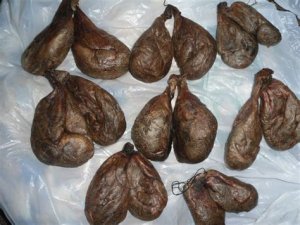
Just as a little touch of high ester Jamaican rum adds complexity to a blend, so perfumers use small amounts of animalic aromas to add depth to their creations. Labdanum (cistus resin), and animal secretions from beaver (castoreum), civet and Tibetan musk deer, are to varying degrees leathery, tarry, faecal – funk in its original sense.
These extremes are here in this whisky, but given time and warmth from the mouth a deeper sense of balance emerges. There is sweetness at its heart, nuts, prunes, liquorice, and chocolate, the balsamic elements now controlled.
The effect goes beyond aroma or taste. It is a sensory experience which helps to break the codified techniques of tasting. A slap in the face. A denial of the refined.
‘Why was this chosen?’ someone asks. It’s a sensible question.
‘Because it is wonderfully weird,’ I reply. ‘Because it is something you should experience, for it’s unlikely that you’ll ever come across it again. Because it is extreme and not bottling it would be wrong. Because this is also what whisky is about – and look, everyone’s glass is empty and you’re all smiling.’
All praise to decay and rot.
(*) Phillips & Heining, ‘Neural Correlates of Emotion Perception’, Olfaction, Taste and Cognition, Cambridge 2002
(**) Chandler Burr, ‘The Emperor of Scent,’ Arrow, 2004
—————————–
In My Glass
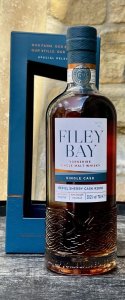 Filey Bay Refill Sherry (distilled 2018) 59.2%/£120
Filey Bay Refill Sherry (distilled 2018) 59.2%/£120
Bottled for indie outlets there are/were only 306 bottles of this. If it’s sold out, my apologies, but it’s great news showing that a) the distillery has a following, b) people have good taste and c) any talk of whisky’s death is premature. It could be all three…
Anyhoo, there is something I love about whiskies from refill sherry casks. Those traces of the original wine, the subtle wood. They offer nuance rather than bludgeoning power.
Spirit of Yorkshire makes a gentle dram which could easily be blootered by a first-fill. Here though you get maple syrup flapjack, sultana, dried peels and crystallised plum on the nose. It’s rounded and soft, with no hint of its high strength. That comes across on the palate, so be aware and have water on hand.
It remains sweet, with the oxidised elements beginning to emerge. Toasted nut, barley sugar. It’s medium dry, with a lightly spiced finish. A lovely dram.
————————————

In My Ears
These thoughts of the buried and decayed leads me to the work of Richard Skelton https://aeolian.bandcamp.com/album/box-of-birch
Dig in, dig down